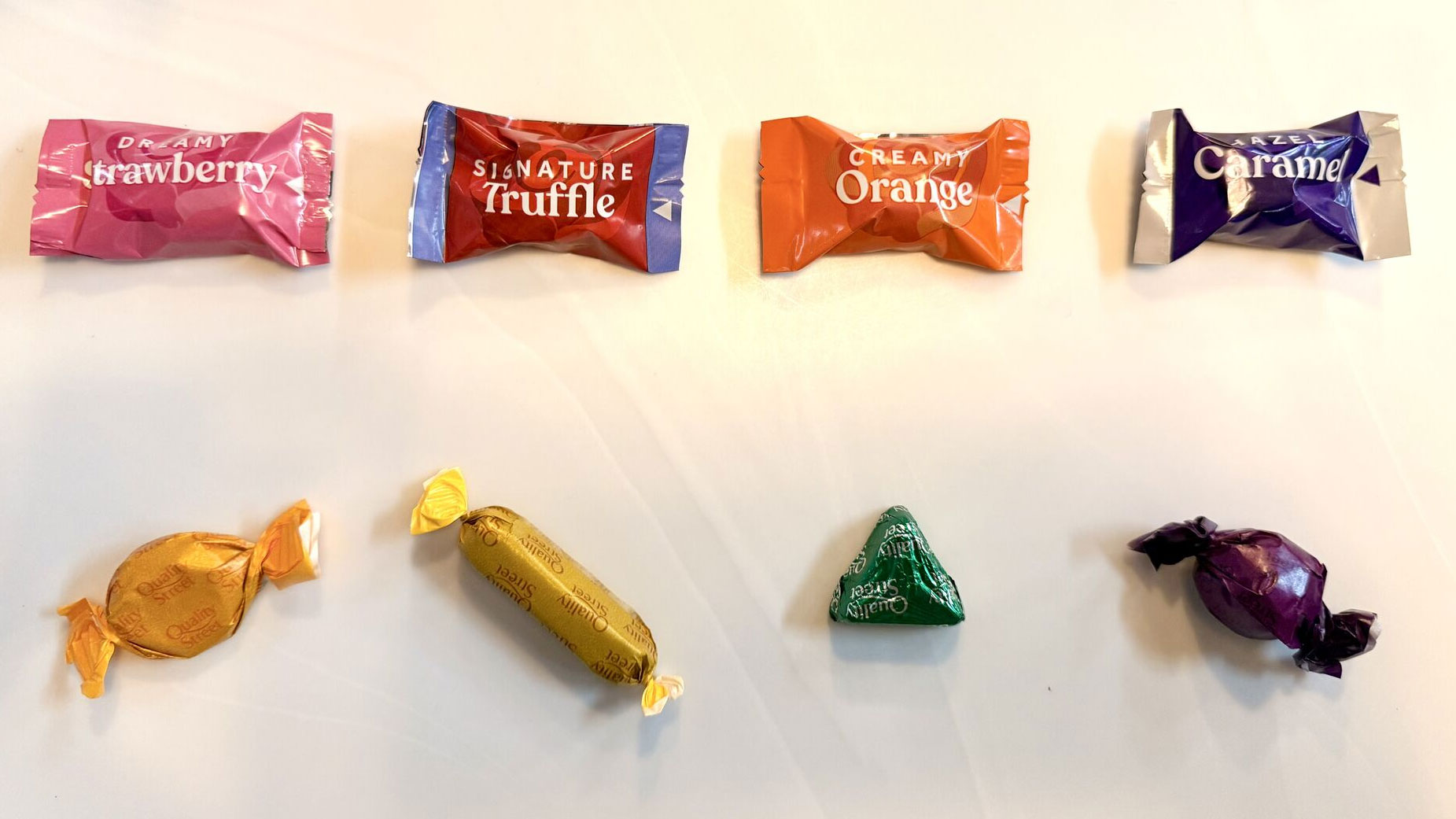The best watercolour paints
Create amazing art with clear and vibrant colours by using the best watercolour paints.
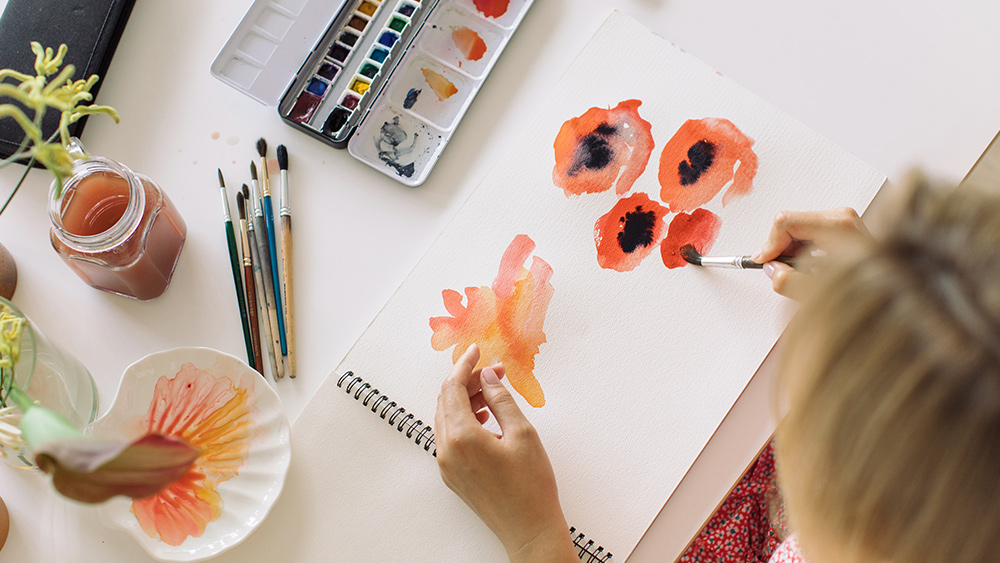
The best watercolour paints allow you to create washes of transparent colour that can be layered to create depth and complexity. The unpredictable way the pigments interact with water can lead to surprising and beautiful effects, helping you to produce unique and evocative art, so they're worth trying even if it's not your normal painting media.
To compile this list, we've been road-testing as many liquid and solid pan watercolour paints as we could get our hands on. We've got hands-on with a range of products to assess them in terms of how well they work, how easy they are to apply, the range of colours on offer and overall value for money. In our list below we've included paints that will suit beginners, pros and everyone in between.
Once you've chosen the paints that suit you best, also check out our guide to the best watercolour paper, and if you want to improve your technique we also have a selection of watercolour tutorials and watercolour techniques to try out. Plus if you want to complete your kit, you may also be interested in our list of the best watercolour pencils or the best Black Friday art supply offers.
The best watercolour paints
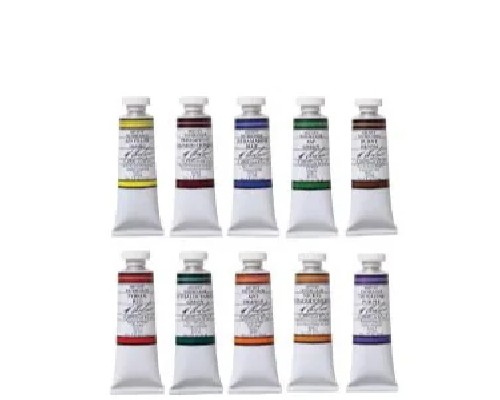
+ Intense colour
+ Stays wet
+ Good value
- 15ml tubes
Using blackberry honey as part of its binder, these smooth, viscous paints remain sticky, keeping the paint vivid, but less suitable for reuse. They lift easily, with intense colours that go a long way in washes. The tubes won't dry out easily and offer good value.
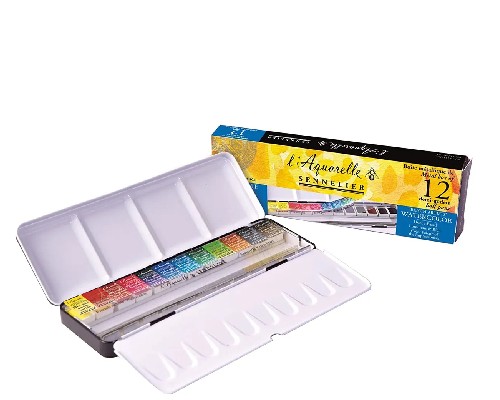
+ Reactivates easily
+ Bright colours
+ Good value
- Stays sticky
These honey-based paints have rich, high-pigment colours and great consistency. Pans mix, perform, and reactivate exceptionally well, though they take a while to dry, and may remain tacky in humid climates. They are good value for professional quality paints and an excellent choice for portable sketching.
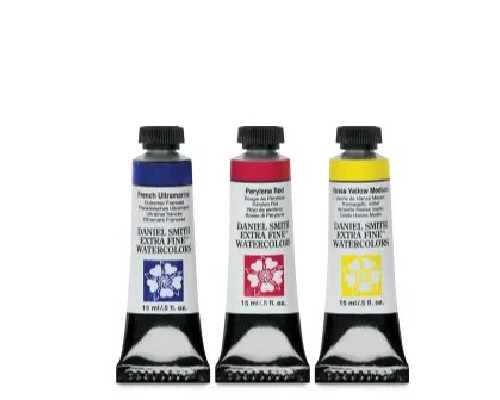
+ Excellent quality
+ Colour range
+ Granulating textures
- Expensive
These extra fine watercolours are vibrant, artist-quality paints, with an immense range of 261 colours including exclusives, Primatek minerals, and a number of luminescent colours. They tend to be more granulating, depending on the pigment, but will still lift easily from paper.
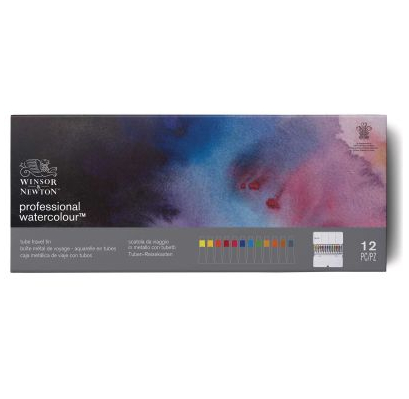
+ High quality
+ Consistent behaviour
+ Non-toxic options
- Expensive
These reliable, versatile, artist-quality paints behave consistently with minimal variation between colours, making them good for beginners. Colours are intense and rich, with good-quality pigments and non-toxic alternatives. The paint stays wet and readily reactivates, making it convenient for pan and palette users.
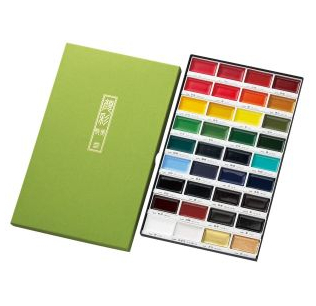
+ Great value
+ Large pans
+ Consistent and smooth
- Unconventional
These affordable paints include a good range of bright, easily activated colours with a smooth texture. They are more opaque than standard watercolours, developing a slight gloss when layered, and once on paper, they don't move much. They lay evenly on dry paper, making them great for sketching and colouring illustrations.
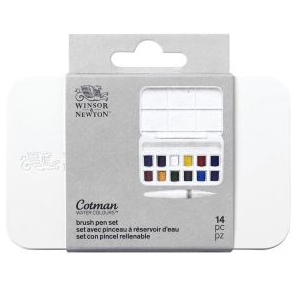
+ Portable
+ Pocket-sized
+ Includes brush pen
- Weak colours
- Low-quality pigments
This student-quality, pocket-sized watercolour set is great for portable painting and even has a waterbrush. It's well-designed, with a partitioned mixing tray on the lid. Colours behave predictably and mix well, but aren't very intense, containing 'hue' imitations of some pricier pigments.
FAQs
How is watercolour paint different from other types of paint?
The key characteristic of watercolour paint is its translucency. That means that unlike other kinds of paints, layers of watercolours build upon each other. Each layer reveals the ones beneath, allowing for delicate washes, soft gradients, and playful interactions between colours.
What are watercolour paints made of?
Watercolour paints are typically consist of natural or synthetic pigment (a powder used to add colour), a binder to hold the pigment in suspension such as gum arabic, additives such as glycerin, ox gall or honey, preservatives to alter the viscosity of the pixment, and water.
What paper do I need to paint with watercolours?
The best kind of paper to use with watercolour paints is, quite simply, watercolour paper. This is specially thick, absorbent and robust paper that allows the colours to shine brightly. Learn more in our guide to the best watercolour paper. Watercolour paints can be used on other surfaces, such as watercolour canvas or specially treated boards.
How to choose the best watercolour paints
Choosing the best watercolour paints depends on various factors, including your preferences, budget, and the specific characteristics of the paints.
Look at pigment quality: professional-grade watercolours often use pure pigments, resulting in richer and more vibrant colours. Check the lightfastness rating, which indicates how resistant the pigments are to fading over time. And consider the colour range offered by the brand: a wide range of hues allows for more versatility, although if you're a beginner you might prefer to limit your choice to avoid being overwhelmed.
Finally, think about whether you want your paint in tubes or pans. Tubes are more suitable if you prefer to work with a wet palette or need larger quantities, but pans are convenient for travel and easy to use on the go.
How we test the best watercolour paints
Testing the best watercolour paints involves evaluating several factors. We meticulously assess pigment quality, prioritising those with high colour intensity and lightfastness for enduring artworks, as well as transparency and granulation. We also explore the colour range's breadth, emphasising both essential hues and unique shades for artistic flexibility.
Daily design news, reviews, how-tos and more, as picked by the editors.

Josephine Watson (@JosieWatson) is an experienced tech journalist with experience writing on a variety of topics from pop culture to gaming and even the energy industry. She is the Managing Editor of Lifestyle on CreativeBloq's sister site, TechRadar, overseeing the Lifestyle vertical (Cameras, Home and Wellness) and How-To's, where she can be found writing across multiple channels including computing, software, homes and gaming.
- Lancelot RichardsonArtist, painter and illustrator
